Association between cystatin C and diabetic retinopathy among type 2 diabetic patients in China: a Meta-analysis
Nan Yang, Yun-Fei Lu, Xiao Yang, Kui Jiang, Ai-Min Sang, Hui-Qun Wu
1Department of Medical Informatics, Medical School of Nantong University, Nantong 226001, Jiangsu Province, China
2Department of Ophthalmology, Affiliated Hospital of Nantong University, Nantong 226001, Jiangsu Province, China
Abstract
● KEYWORDS: diabetic retinopathy; cystatin C; Meta-analysis
INTRODUCTION
A workflow diagram of eliminating and including literatures was presented in Figure 2. A total of 195 articles were identified after removing duplicates and among them four were excluded due to comments and animal experiments. Next,146 articles were further excluded after reading the abstract of the remaining articles for inconsistences in research contents or measures and 13 were excluded after reading the full text because proper outcomes did not occur. Finally, eight articles appearing inconsistent outcomes and one articles appearing the same outcomes were further excluded. The remaining 23 articles were selected for the Meta-analysis.
Meta-analysis of Overall Cys-C Levels in the DWR,NPDR, and PDR groupThe forest plot of included eleven studies with 1813 participants showed the difference of Cys-C levels between the overall DR and DWR group (Figure 3). The heterogeneity was high (P<0.1,I2>50%). The result revealed that there was an increasing level of Cys-C in patients with DR (total MD: 0.69, 95%CI: 0.41 to 0.97,Z=4.79,P<0.01).Among the 23 studies, another 12 articles classified DR intoNPDR and PDR. Mean difference of Cys-C between DWR and NPDR was presented in Figure 4. The forest plot indicated higher Cys-C level in the NPDR than that of the DWR (total MD: 0.29, 95%CI: 0.20 to 0.39,P<0.01). Meanwhile, the similar effect was observed in the PDRvsNPDR group (total MD: 0.63, 95%CI 0.43 to 0.82,P<0.01; Figure 5).
MATERIALS AND METHODS
Search Strategy and Selection CriteriaWe performed a computerized search of PubMed, EMBASE, Cochrane Library, Chinese National Knowledge Infrastructure (CNKI),VIP and Wanfang to identify potentially relevant articles published to August 2020. We also searched Google Scholar and Clinical Trials for unpublished studies. The search terms and strategies for PubMed were “diabetic retinopathy”,“diabetic retinopathies”, “retinopathies, diabetic”, “retinopathy,diabetic”, “Cystatin C”, “Cys-C”, “post-gamma-globulin”,“post gamma globulin”, “neuroendocrine basic polypeptide”,“basic polypeptide, neuroendocrine”, “Cystatin 3”, “gammatrace” and “gamma trace”. Two authors (Yang N and Lu YF) reviewed the list of articles. Two researchers (Yang N and Yang X) who read the full text of all studies determined the suitability for inclusion based on pre-specified inclusion criteria. The inclusion criteria included: case-control study;individuals with type 2 DM; the exact mean and standard deviation of Cys-C in serum and other sufficient data were provided. There was no limitation on age and no language or publishing date restrictions. If papers we collected are abstracts, letters, editorials, expert opinion, reviews,observational studies, or case reports, they would be excluded.In addition, overlapped or duplicate data, nonhuman research and insufficient data are also our exclusion criteria.
Data Extraction and Quality AssessmentTwo researchers(Yang N and Lu YF) participated in extracting data from the included studies. Disagreements about extracting data were solved through communication and discussion with a third reviewer (Yang X). Information such as first author’s name,year of publication, country, Cys-C detection method, sample,number of participants, sex, mean age, body mass index(BMI), HbA1c, Cys-C, total cholesterol (TC), triglycerides(TG), high density lipoprotein cholesterol (HDL-C), and low density lipoprotein cholesterol (LDL-C) was extracted precisely. If included literature represented outliers such as very large or very small data, researchers would eliminate the unusual data. Quality assessment of each included study was performed according to the Newcastle-Ottawa Scale (NOS).Studies with a score less than 5 indicated a high risk of bias.
协同过滤算法在电子商务和推荐系统中被广泛应用[7]。其基本思想是,通过对用户历史行为数据的挖掘发现用户的偏好,基于不同的偏好对用户进行群组划分并推荐类别相似的商品。协同过滤算法根据其主体不同可分为两类:基于用户的协同过滤算法和基于商品的协同过滤算法。
白内障为眼科常见病,其发生机制较为复杂,遗传因素、免疫代谢异常、营养不良、中毒、辐射、老化均会对眼球晶状体的代谢状况造成影响,使其代谢发生紊乱,进而使晶状体蛋白质出现变性浑浊,诱发白内障[1]。该病对患者的视力造成极大损害,是诱发失明的主要病因之一,予以及时有效治疗对于改善患者的视力水平具有重要意义。手术为主要治疗方法。小切口手法超乳术具有创伤小,治疗效果好的优势,是最佳治疗方案,配合优质护理更能优化手术效果[2]。本次研究以我院患者为研究对象,探究优质护理的临床应用价值。
RESULTS
Diabetes mellitus (DM) totally affected nearly 463 million people over the world in 2019 and this number is estimated to reach 578 million by 2030[1]. Diabetic retinopathy(DR) is a serious microvascular complication deriving from DM[2]. As the prevalence of DM continues to rise, incidences of DR which threatens the vision are projected to increase to 191 million by 2030. DR remains the major cause of blindness in adults worldwide[3-4]. According to the clinical study, DR is divided into non-proliferative diabetic retinopathy (NPDR) and proliferative diabetic retinopathy (PDR). NPDR is the earliest stage of DR and can develop into PDR without effective treatment[5]. Various factors such as hypertension, obesity,hyperlipidemia and hyperglycemia cause DR exacerbation[6].Several mechanisms including altered endothelial cell junctions, inflammatory processes and central retinal venous congestion were proposed for its pathogenesis[7]. Around 40%of patients with type 2 diabetes already have been diagnosed with retinopathy and another 20% will develop this disease in next 6y[8]. Because of the high incidence, more diagnostic schemes are urgently needed.
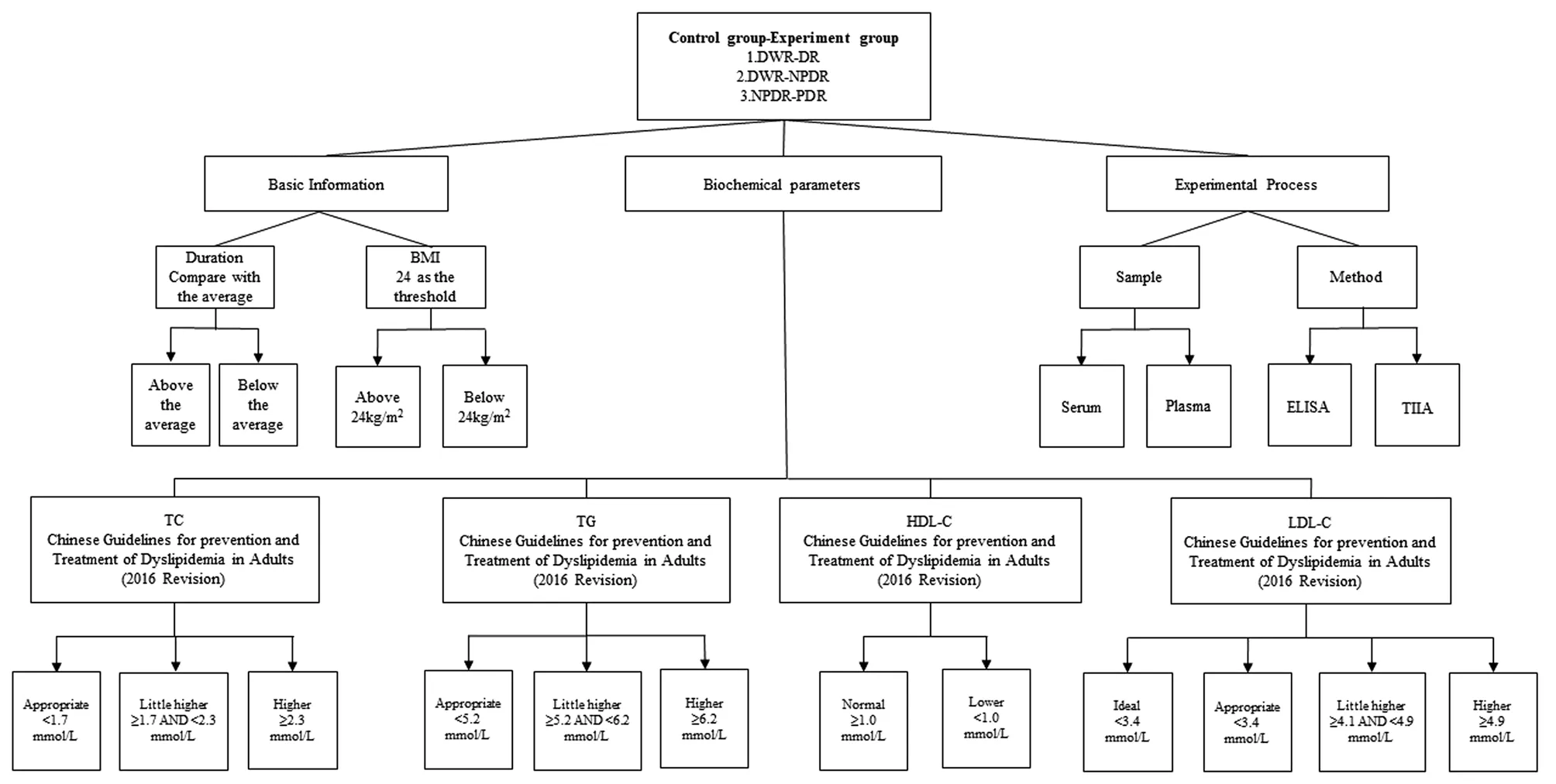
Figure 1 The diagram of criteria and classification for subgroup analyses.
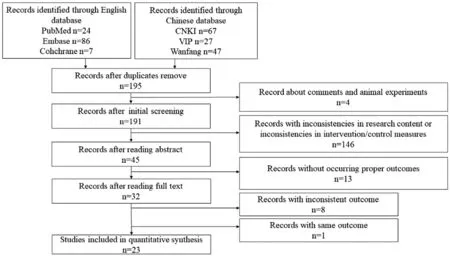
Figure 2 Flowchart of study selection.
Characteristics of the Included StudiesThe main characteristics of the included studies were summarized in Table 1. The 23 included studies[21-43]covered 2331 DR (NPDR or PDR) patients and 2023 diabetic without retinopathy (DWR)patients. DR patients were divided into NPDR and PDR in 12 studies. Among these 23 studies, 21 investigated serum Cys-C levels and the other two investigated plasma Cys-C levels.The patients in 23 studies were all type 2 DM patients from China. Clinical characteristics like age, gender, DM duration,BMI, HbA1c, Cys-C, levels of TC, TG, HDL-C, LDL-C, and available renal function of DR patients were recorded. Eight research reported parameters related to renal function. Two articles provided data of GFR, five articles considered serum creatinine concentration (Scr) and one reported blood urea nitrogen (BUN) of samples. Among them, renal functions of patients in four studies[19,26,30,38]were within normal range.Levels of other four groups or the DWR, DR subgroups were just a little away from standard. Blood sample origins including serum or plasma and experimental methods such as turbidimetric inhibition immune assay (TIIA) and enzyme linked immunosorbent assay (ELISA) were also recorded.Most patients were middle-aged or elderly and their age ranged from fifty to sixty. The overall duration of the disease varied from approximately 2 to 15y and most fluctuated within ten years. Most patients with DWR and DR (NPDR or PDR)showed BMI>24 kg/m2. Blood lipid parameters such as TC,TG, and LDL-C saw a slight to moderate increase between control groups and experiment groups. Eight studies were rated as a total score of 6, thirteen studies as a score of 7 and two studies as a score of 8, none of them indicated a high risk of bias.
一是实行税收优惠政策。落实扶持中小企业发展的税收优惠政策,按有关税收政策规定,对符合条件的小型微利企业给予税收优惠。二是鼓励各类人员到家庭服务业就业创业。将发展家庭服务业与落实就业扶持政策紧密结合,完善促进就业政策体系。三是强化职业技能培训。把家庭服务从业人员的岗前培训作为职业技能培训工作的重点,制订培训计划,落实培训补贴。
Assessment of Heterogeneity and Publication BiasHeterogeneity will be assessed by Cochran’sQ-test and HigginsI2statistics.I2≥ 50% orP< 0.1 indicated that there was a statistical heterogeneity, random effect model (REM) was applied to analyze the data. Funnel plots were used to evaluate the publication bias by the RevMan. If the funnel plots were roughly symmetrical, no publication bias was present.
Cystatin C (Cys-C) belongs to the type 2 cystatin gene family on chromosome 20[9]. Almost every organ of the body can express Cys-C. Due to its high concentration in biologic fluids, Cys-C is an important extracellular inhibitor of cysteine proteases[10-12]. It is a non-glycosylated protein that plays pleiotropic roles in human vascular patho-physiology[13].Clinically, the index of Cys-C is used as a diagnostic parameter to record glomerular filtration rate (GFR) due to its easy detection and lower molecular weight. Previously, researchers have done Meta-analyses to prove that serum Cys-C is a predictor of diabetic nephropathy in diabetic patients[14-15].However, the fluctuation of Cys-C level may have more important clinical value than a mere parameter of kidney function[16]. National Health and Nutrition Examination Survey(NHANES) found that Cys-C could be a better predictor for DR compared to creatinine, related to shared pathogenic pathways between retinopathy and Cys-C[17-18]. One previous study demonstrated that higher serum Cys-C levels were positively associated with the frequency of DR, chronic heart disease and stroke in type 2 DM patients with normal renal function or mild renal impairment[19]. Furthermore,such Meta-analysis on the correlation between Cys-C and DR has not been reported yet. Considering both nephropathy and retinopathy are microvascular complications of DM, we carried out the Meta-analysis to explore the clinical value of serum Cys-C for DR.
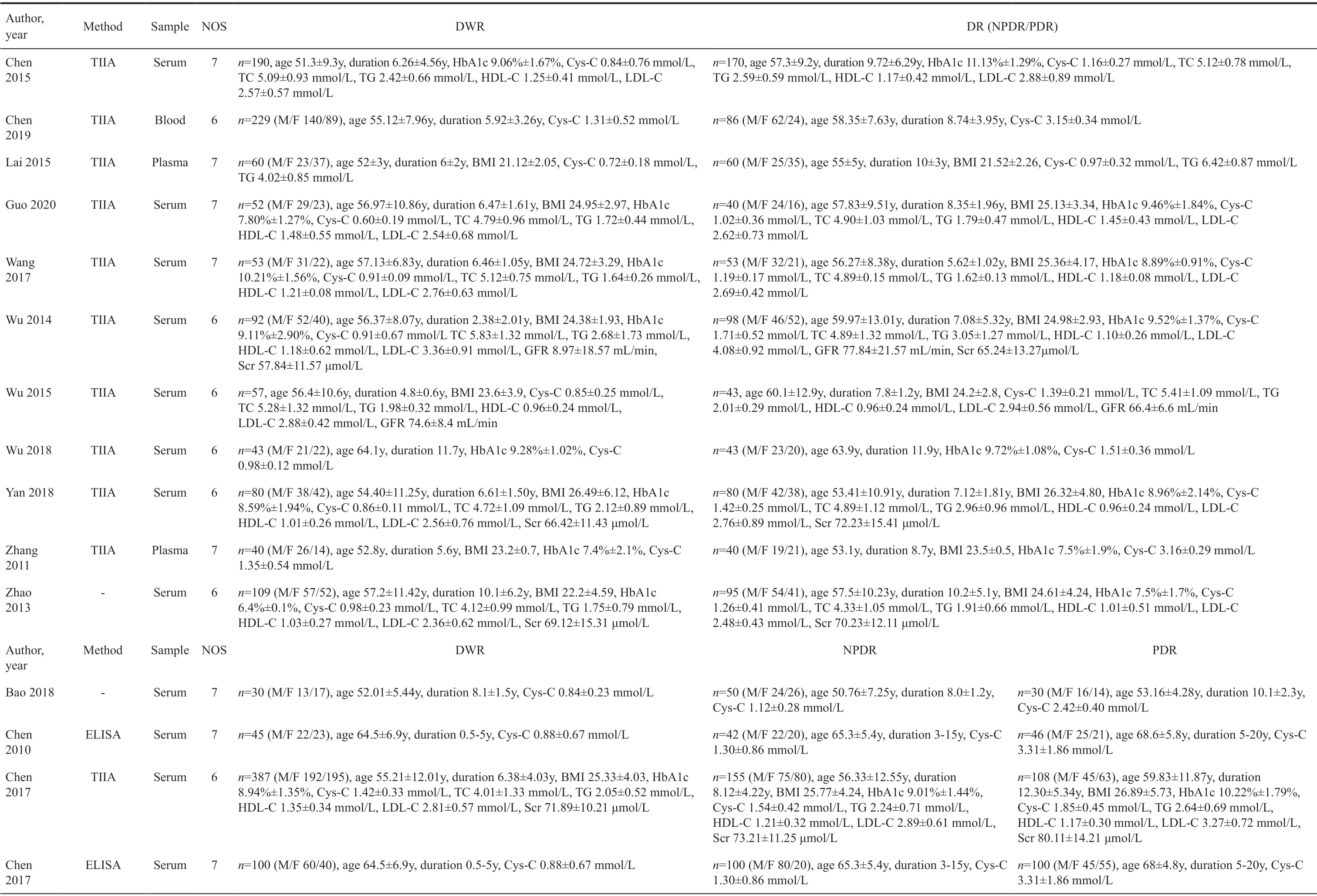
Table 1 Main characteristics of the included studies

Table 1 Main characteristics of the included studies (continued)
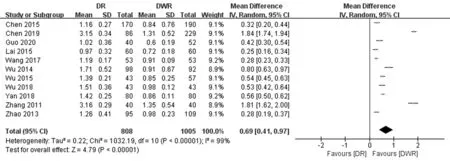
Figure 3 The forest plot of Cys-C between the DR and DWR group.
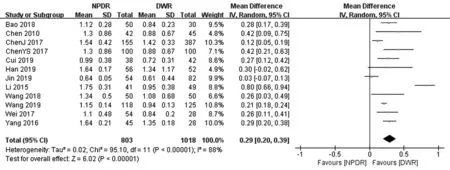
Figure 4 The forest plot of Cys-C between the NPDR and DWR group.

Figure 5 The forest plot of Cys-C between the NPDR and PDR group.
Publication Bias AnalysisWe performed a funnel plot analysis to investigate the potential publication bias among included articles. In addition to data of DR-DWR from included 11 articles without classifying DR into NPDR and PDR, we input data of NPDR-DWR and PDR-DWR from the other 12 research into DR-DWR. The result showed that the distribution of studies was almost symmetrical, therefore no significant publication bias was found (Figure 9).
Statistical Analysis and Subgroup AnalysesWe performed statistical analyses by applying Review Manager 5.3 (Nordic Cochran Centre, Copenhagen, Denmark) provided by the Cochrane Collaboration by imputing the mean and standard deviation (SD) we recorded from included studies. The mean difference (MD) and 95% confidence interval (CI) were calculated, andP< 0.05 was considered statistically significant.To adjust the possible heterogeneity among included studies,we divided samples into different subgroups as shown in Figure 1. We set the 10y as a cutting-off point for DM duration subgroup analysis. The subgroup of normal or abnormal TC,TG, HLD-C, and LDL-C according to Chinese Guidelines for Prevention and Treatment of Dyslipidemia in Adults (2016 Revision)[20]were analyzed.
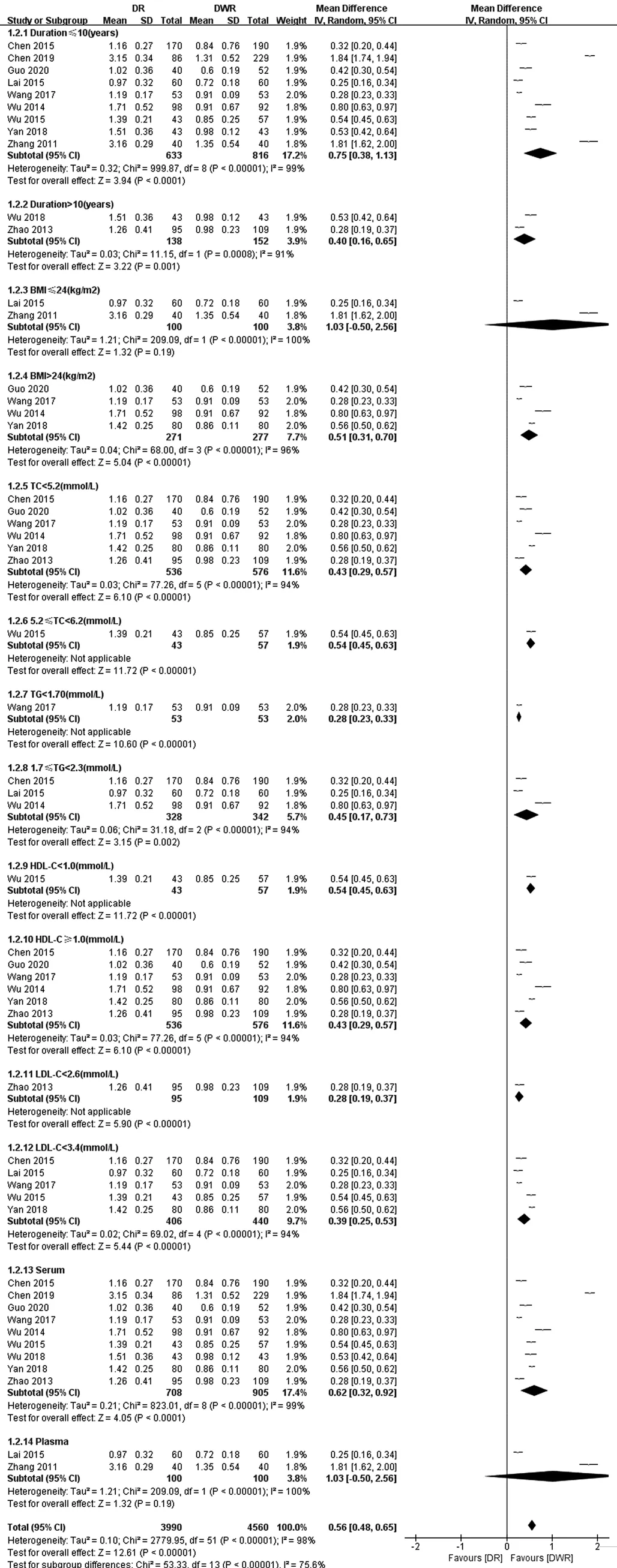
Figure 6 The forest plot of Cys-C between different DM duration,BMI, TC, TG, HDL-C, LDL-C, sampling subgroups of the DR and DWR group.

Figure 7 The forest plot of Cys-C between different BMI, TC,LDL-C, detection methods subgroups of the NPDR and DWR group.
Subgroup Analysis ResultsThe results comparison between DWR and DR was presented in Figure 6. The heterogeneity of most of the subgroup analyses was still obvious (I2≥ 50%,P< 0.1). The Cys-C level of the DR group was noticeably higher than that of the DWR group except BMI≤24 kg/m2subgroup (subtotal MD: 1.03, 95%CI -0.50 to 2.56,Z=1.32,P=0.19) and plasma subgroup (subtotal MD: 1.03, 95%CI-0.50 to 2.56,Z=1.32,P=0.19). Two exceptions showed the same result because both included the same articles. In subgroup analyses between DWR and NPDR, NPDR and PDR, the difference of the level of Cys-C between control group and experiment group presented the same trend as the comparison between DWR and DR. As Figure 7 showed,different subgroups in DWR and NPDR attained huge decrease in heterogeneity to some extent such as BMI>24 kg/m2(P=0.16,I2=39%). Particularly, ELISA (P=0.54,I2=0) displayed no heterogeneity. Forest plots of different subgroups indicated that there was a slight increase of Cys-C during the period between DWR and NPDR. In another subgroup analyses of NPDR and PDR in Figure 8, heterogeneity of the majority remained the similarly high level as DWR and DR (I2≥ 50%,P< 0.1).One obvious decline was only observed in the subgroup of LDL-C<3.4 mmol/L (P=0.07,I2=69%). Likewise, a small increase could be seen in the process from NPDR to PDR.
DISCUSSION

Figure 8 The forest plot of Cys-C between different DM duration,BMI, TG, LDL-C, detection methods subgroups of the PDR and NPDR group.
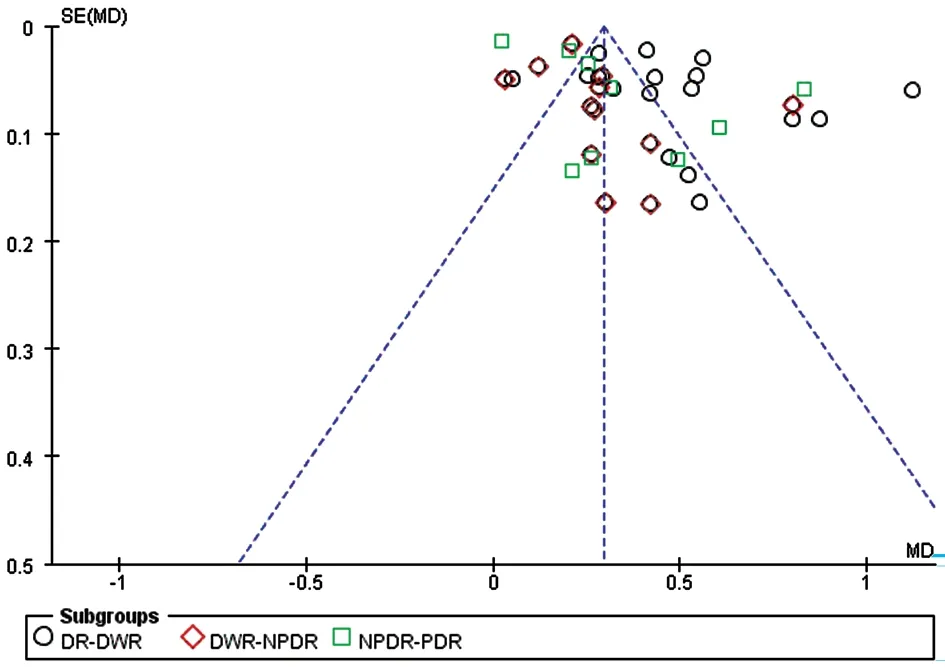
Figure 9 Funnel plot of included articles.
Cys-C is widely used as a biomarker of kidney function for its relatively easy detection and lower molecular weight to measure GFR. Cys-C is removed from the blood by glomerular filtration, whose concentration will increase in serum due to failed kidney function. Previous Meta-analysis compared the diagnostic accuracy of Cys-C with creatinine[14]. Based on this physical property, another Meta analysis proved the predicting value of Cys-C in diabetic nephropathy[15]. In our study, we analyzed the role of Cys-C in DR. To prove its relationship with DR, we firstly analyzed 11 articles dealing with the comparison between DWR and DR. After data from these articles was input in Revman, forest plot showed that there was an increase in the level of Cys-C in DR in contrast with DWR.Further results showed that there was an obvious increase in levels of Cys-C from DWR to NPDR and NPDR to PDR. That is, as the DR disease progresses, the amount of Cys-C shows an upward trend, suggesting the Cys-C is strongly associated to DR severity. We carried out the subgroup analysis, the Cys-C level of the DR group was significantly higher than that of the DWR group. Forest plots of different subgroups indicated that there was a slight increase during the period between DWR and NPDR.Heterogeneity of subgroup BMI>24 kg/m2(P=0.16,I2=39%)and subgroup ELISA (P=0.54,I2=0) becomes depleted.Increase could be apparent in the process from NPDR to PDR.DR is a serious microvascular complication deriving from DM.Some biochemical mechanisms have been proposed to explain the pathogenesis of retinopathy through effects on cellular metabolism, signal pathways. Implicated pathways such as oxidative stress, protein kinase C activation, inflammation, and vascular endothelial growth factor (VEGF) have been proved to relate with the process of DR[44-45]. VEGF is a principal mediator of DR, capable of inducing changes in NPDR and PDR[4]. Elucidation of VEGF-induced cellular and molecular mechanisms involved in DR has provided the foundation of developing novel therapeutic approaches to preventing ocular complications[46]. As an extracellular inhibitor of cysteine protease,Cys-C involves in this biochemical mechanism. Previous study covering the neurovascular units (NVUs) in Parkinson’s disease demonstrates that Cys-C induced angiogenesisviaregulating the level of secreted VEGF protein in the NVUs. Cys-C induced VEGF attenuated 6-OHDA-lesioned PC12 cell degeneration by regulating p-PKC-α/p-ERK1/2-Nurr1 signaling and inducing enhanced autophagy. In the NVUs, VEGF in the conditioned media of 6-OHDA-lesioned PC12 cells over-expressing Cys-C markedly increased angiogenesis. Besides, blockage of autophagy by 3-methyladenine (3-MA) in the Cys-Cover-expressing PC12 cells significantly decreased VEGF expression and VEGF-mediated angiogenesis. It’s proved that over-expression of Cys-C increased VEGF expression[47]. In addition, one research about systemic lupus erythematosus(SLE) demonstrated that the increasing degrees of Cys-C are positively correlated with the level of VEGFin vivo[48]. From the view of neuron, several studies of animals and humans have confirmed that retinal cells are damaged by diabetes dysfunction of Müller cells[49]. Müller glia plays an important role in neovascularization, vascular leakage, and vascular lesion in diabetic retinas. VEGF signaling is closely related with Müller glia viability and neuroprotection in diabetic/hypoxic retinas[50]. As the conclusion that the level of Cys-C is positively correlated with the degree of VEGF talked before, we infer that Cys-C plays a vital role in the viability of Müller glia. Inflammation also plays an important role in DR development[51]. Inflammatory cytokines, such as C-reactive protein and tumor necrosis factor alpha have been suggested to contribute to the progression of DR[52]. Cys-C level was found to be correlated significantly to biomarkers reflecting inflammation, independent of renal function. It demonstrated that a partial correlation between Cys-C and multiple biomarkers of inflammation including CRP, interleukin-6, tumor necrosis factor-α soluble receptor 1and factor VIII[53-54]. These researches help prove the effect of Cys-C on inflammation.
Despite the findings we achieved, the present Meta-analysis had several limitations. First, heterogeneity in our Metaanalysis may limit the generalization of the pooled result and the source of heterogeneity could not be discerned by a subgroup analysis. Subgroup analysis was also conducted to explore the heterogeneity. The heterogeneity of most of the subgroup analyses was still obvious in the comparison between DWR and DR, NPDR and PDR. It is worth mentioning that BMI>24 kg/m2and ELISA displayed lower heterogeneity in subgroup analysis between DWR and NPDR. Second, the number of studies in this Meta-analysis is relativelysmall.Third, some included studies had missed description such as method of detecting the level of Cys-C. Finally, all samples included in our analysis were all from China, lack of coherence from other countries.
In conclusion, this Meta-analysis verifies correlation between increased Cys-C levels and DR in Chinese type 2 DM patients.Large sample size prospective study is in need to confirm the findings in the future.
ACKNOWLEDGEMENTS
对于因短距离内二次换装而导致总运输成本高的地区,如广州黄埔区、荔湾区.建议枢纽港与支线港合作:调整水上“巴士”运价,适当降低两端作业费用,提高效率以缩短两端作业时间,弱化水上“巴士”二次换装的劣势.
这是富商之家,在胡人包围桂州前,富商就见过梨友,献上金银珠宝,还把城中哪些人家有钱、哪些人家在朝中当官,都详尽地写在单子上,交给了梨友。梨友看他忠诚,许破城之日,让他做桂州县令。
Foundations:Supported by the National Key R&D Program of China (No.2018YFC1314900; No.2018YFC1314902);National Natural Science Foundation of China (No.81971708);Science and Technology Project of Nantong City (No.MS12020037); Excellent Key Teachers in the “Qing Lan Project” of Jiangsu Colleges and Universities and “226 Project”of Nantong; Postgraduate Research & Practice Innovation Program of Jiangsu Province (No.KYCX20_2836); Jiangsu Students’ Platform for Innovation and Entrepreneurship Training Program (No.2020103040185E).
Conflicts of Interest:Yang N,None;Lu YF,None;Yang X,None;Jiang K,None;Sang AM,None;Wu HQ,None.
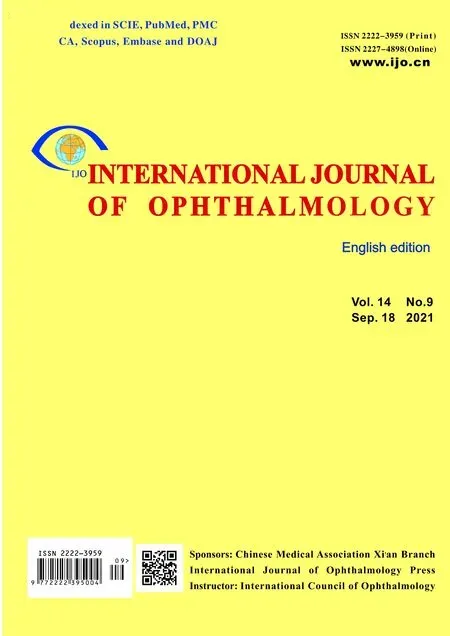 International Journal of Ophthalmology2021年9期
International Journal of Ophthalmology2021年9期
- International Journal of Ophthalmology的其它文章
- Five-year results of refractive outcomes and visionrelated quality of life after SMlLE for the correction of high myopia
- One-step viscoelastic agent technique for lCL V4c implantation for myopia
- miRNA-26b suppresses the TGF-β2-induced progression of HLE-B3 cells via the PI3K/Akt pathway
- Pediatric ocular trauma with pars plana vitrectomy in Southwest of China: clinical characteristics and outcomes
- Socio-economic disparity in visual impairment from cataract
- Disseminated hydatid disease in the orbit and central nervous system
